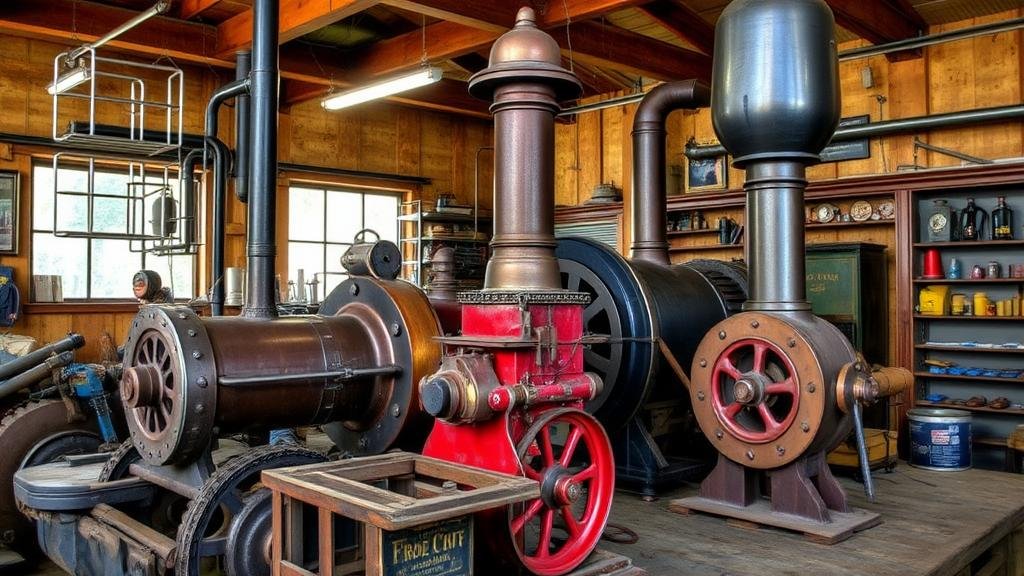Exploring Historical Steam Engine Repair Shops for Industrial Relics
Exploring Historical Steam Engine Repair Shops for Industrial Relics
This article delves into the significance of historical steam engine repair shops as repositories of industrial heritage. These spaces not only encapsulate advancements in engineering but also reflect the socio-economic conditions of their times. Steam engines revolutionized transportation and industry, and their repair shops provide insights into the maintenance practices and technological innovations that emerged during the industrial era.
The Evolution of Steam Engine Repair Shops
Steam engines made their debut in the late 18th century, with pioneers like James Watt significantly enhancing their efficiency and application. growth of these engines resulted in a parallel development of repair shops, which became critical for maintaining the engines used in transportation, mining, and manufacturing.
By the late 19th century, for instance, the United Kingdom was home to numerous steam engine repair facilities, with notable examples such as the Horsepower Repair Shop in Manchester, active from 1875 to the 1930s. These establishments became hubs for skilled labor, fostering a community of engineers and artisans who facilitated the longevity of steam technology.
Technological Innovations in Repair Practices
Repair shops employed several innovative techniques to maintain and restore steam engines. Key practices included:
- Reboring Cylinders: A critical process to ensure the longevity of steam engines, reboring involved enlarging the engine’s cylinders to remove wear and tear caused by friction.
- Repacking Valve Chambers: Valve chambers required periodic repacking with materials such as hemp or rubber to maintain steam efficiency.
These practices not only improved performance but also showcased the ingenuity of repair shop workers. tools and machinery utilized in these shops, such as lathes and milling machines, reflect early industrial manufacturing techniques.
Historical steam engine repair shops are increasingly recognized as valuable cultural assets. They offer tangible connections to the past, providing insights into the technological advancements and workforce development of the industrial age. Currently, some repair shops have been converted into museums or educational centers, where visitors can learn about steam technology and its historical context.
For example, the National Museum of Industrial History in Bethlehem, Pennsylvania, houses artifacts from a variety of industries, including a preserved steam engine repair shop that illustrates early maintenance practices. This preservation effort highlights the continuing relevance of steam technology in understanding industrialization.
The Impact of Steam Engine Repair Shops on Local Economies
These repair shops had profound effects on local economies. In many cases, they provided stable employment and drove demand for skilled labor, contributing to the burgeoning middle class. In areas heavily reliant on railroads and mining, the repair shops facilitated economic growth by ensuring the operational efficiency of steam engines.
For example, in Detroit during the early 20th century, the repair of steam engines supported the automotive industry’s growth by providing essential services that enabled the transportation of raw materials and finished goods.
Challenges in Preservation
Despite their historical significance, many steam engine repair shops face threats from urban development, neglect, and dwindling interest. Preservation efforts often encounter challenges related to funding and awareness. For example, the Steam Engine Repair Shop in Schuylkill Haven, Pennsylvania, has been at risk of demolition due to encroaching commercial development.
Advocacy groups are crucial in combating these challenges, often organizing campaigns to raise funds and promote awareness of the importance of these historical sites.
Conclusion
Historical steam engine repair shops serve as critical links to our industrial past, illustrating the technological innovations and socio-economic dynamics of their times. Recognition of their importance fosters a deeper understanding of the changes brought about by steam technology and preserves the legacy of those who contributed to industrial advancement.
For effective preservation, it is essential to engage local communities, provide educational programming, and secure funding. As we move further into the digital age, the stories and skills encapsulated within these repair shops remain relevant, offering lessons in engineering, restoration, and economic resilience.
To wrap up, as stewards of industrial heritage, it is imperative to explore, document, and preserve the legacy of steam engine repair shops for future generations.


